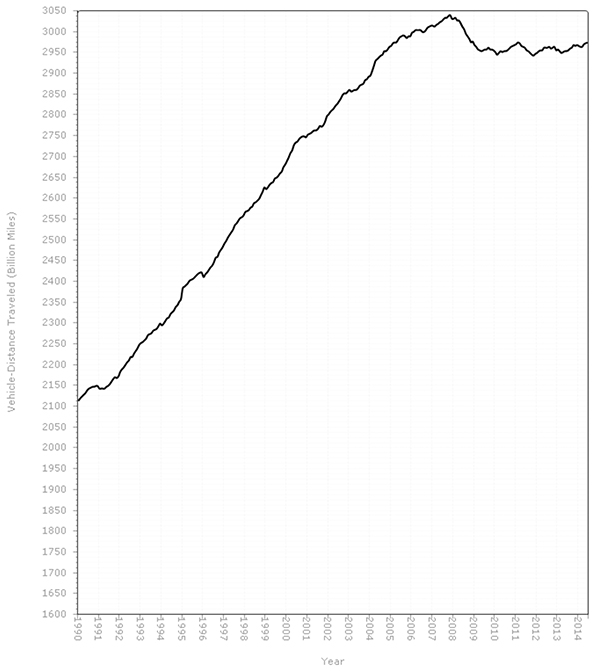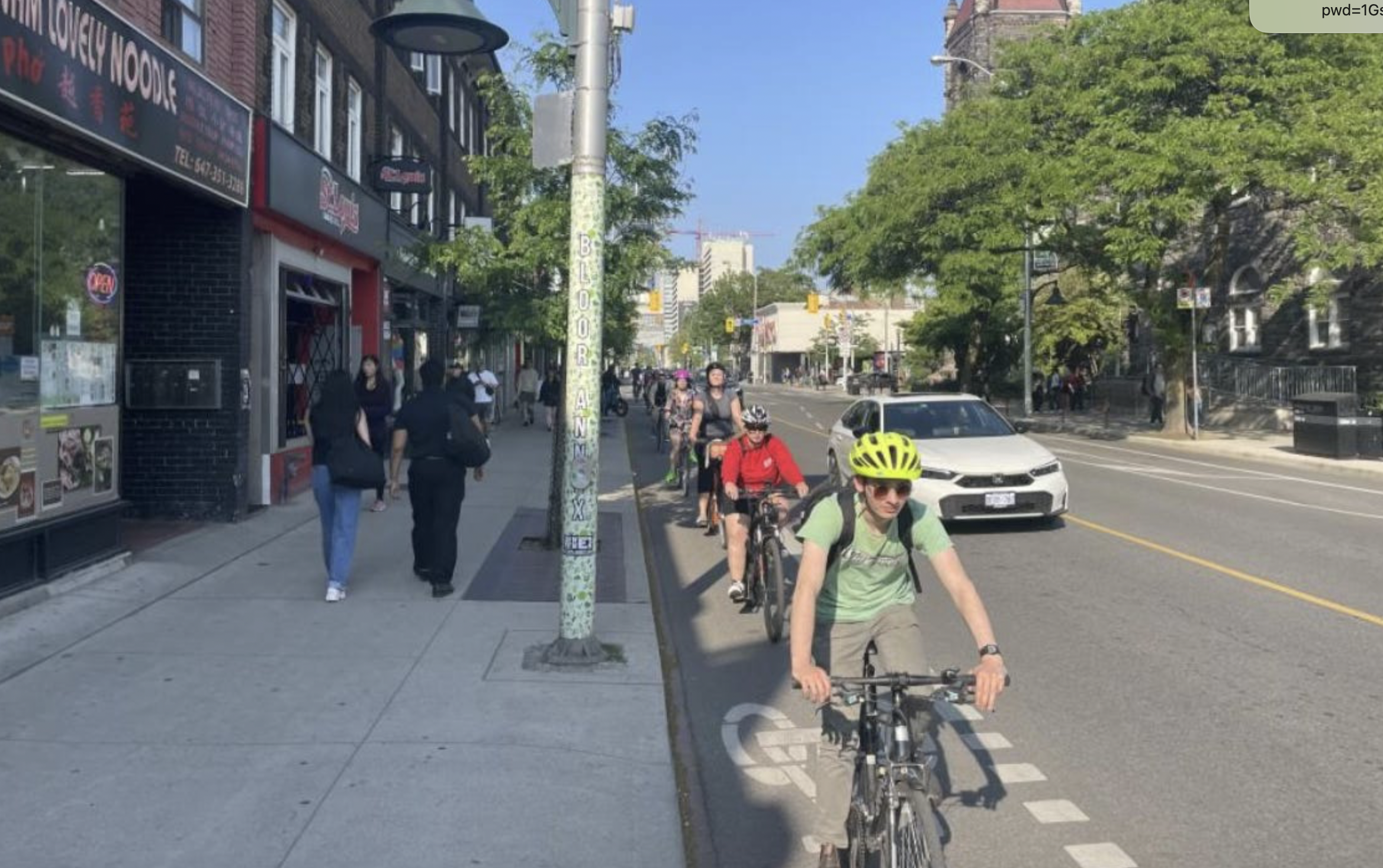
Well, so much for the predictions that changing preferences and new technologies will lead to a car-free utopia. The Federal Highway Administration announced last week that after nine years of steady decline, vehicle-miles-traveled in the U.S. was 1.4 percent higher this June than last June. Apparently, red-blooded Americans everywhere are finally getting back to their Hummer habit after a few years of diminished driving and rising transit ridership and bike commuting.
Except one thing: Driving is still way down from peak levels. While the FHWA’s press release trumpets that "American driving between July 2013 and June 2014 is at levels not seen since 2008" -- adding, alarmingly, a call for "greater investment in highways" -- that's not the whole story. Yes, the total driving rate now approximates where it stood in 2008, when VMT was in freefall. But it's still way down from the peak -- 3.05 trillion miles -- in 2007.
Since the end of the recession, total VMT has fluctuated within a fairly constrained range, remaining well below the 2007 peak. And that’s just total driving. If you look at the per capita driving rate, it's still dropping. In fact, it's as low as it's been in nearly 17 years.
In the FHWA press release, Transportation Secretary Anthony Foxx rejoiced, "More people driving means our economy is picking up speed." But Foxx should know that although GDP and per capita VMT grew together for decades, they’ve uncoupled in recent years, especially as the economy recovered from the recession and driving rates kept dropping.
Foxx followed that dubious line with a push to "increase our investment in transportation" by passing the president’s $302 billion GROW AMERICA Act. But as Shane Phillips writes at Better Institutions, "their motivations are misguided":
Although the bill is a positive step forward in the national transportation policy debate -- emphasizing highway repair, transit investment, and increased local control of transportation funds -- Americans should be skeptical of any suggestion that spending more money on accommodating cars will do anything to ease their commutes. We've been doing that for decades, and even though VMT has been stagnant and per-capita VMT has steadily and consistently declined, we've got virtually nothing to show for it.
Plus, as Tony Dutzik of the Frontier Group said in an email: “If rising VMT, according to the FHWA, fuels ‘calls for greater investment in highways,’ then, by the same logic, falling VMT would result in reduced need for investment in highways. Right? Yet, I can't recall FHWA ever making that argument. And we have continued to plow money into highway expansion over the last decade.”
Perhaps Doug Short of Investing.com put it best: “As we can readily see, the post-recession pattern suggests a structural change in our driving habits” -- despite the FHWA’s gleeful declaration that Americans have returned to happy motoring.





